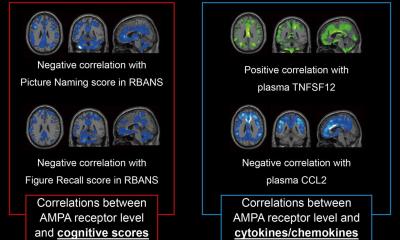EADV Congress
Dermatology is the cradle of manifold medical innovations
A number of innovative research results were presented at the 24th Congress of the European Academy of Dermatology and Venereology that took place in Copenhagen from 7 to 11 October 2015. Some of these results are expected to impact medicine far beyond dermatology, demonstrating the innovative character of the specialty.

The importance of the specialty becomes also obvious against the background of this year’s Nobel Prizes: William C. Campbell and Satoshi Ōmura were honoured for having addressed the importance of skin in infectious diseases, Tomas Lindahl, Paul Modrich and Aziz Sancar were awarded for their research into the mechanisms that cells use to repair DNA, which is vital for the understanding of skin cancer pathogenesis and skin ageing.
Research in psoriasis has led to new treatment options for inflammatory bowel diseases, rheumatoid arthritis and multiple sclerosis
The identification of disease pathways in psoriasis and the development of new targeted drugs (e.g. inhibitors of IL-17 and IL-23) has helped to understand the origin of inflammatory bowel diseases, rheumatoid arthritis and multiple sclerosis. Furthermore, treatments originally developed for psoriasis are now investigated in these diseases, and may be implemented in their standard therapy. A small molecule (fumarates), for example, has now been approved for the treatment of multiple sclerosis.
Insights into how skin cancer suppresses immunity will also lead to novel treatment options for other cancers
The first broadly efficient cancer immunotherapy has been developed in dermatology as a treatment for metastatic melanoma. The anti-PD-1 therapy can hold the progression of metastatic disease for more than 18 months as a new study has shown [1]. As Prof. Martin Röcken, MD, Tübingen, Germany, EADV Scientific Programming Committee Chairman, explained, the therapy will also be tested as treatment for other malignancies – and chances are good that patients with lung cancer, bladder or kidney cancer might benefit from it. But Röcken also pointed to the downside of this innovation. As with many new cancer drugs, treatment costs can add up to 250,000 EUR per patient, a sum, most health systems have difficulty to afford. This is especially worrisome, because the basic research for these therapies was performed in publicly-funded research institutes. ʺWe have to make sure that innovations reach the patients and we have to care that promising treatments do not become too expensive. This is a challenge medical doctors face nowadaysʺ, explains Röcken.
[1] Robert C et al. N Engl J Med. 2015 Jan 22;372(4):320-30
Source: EADV
12.10.2015











